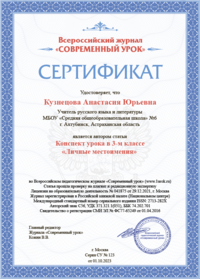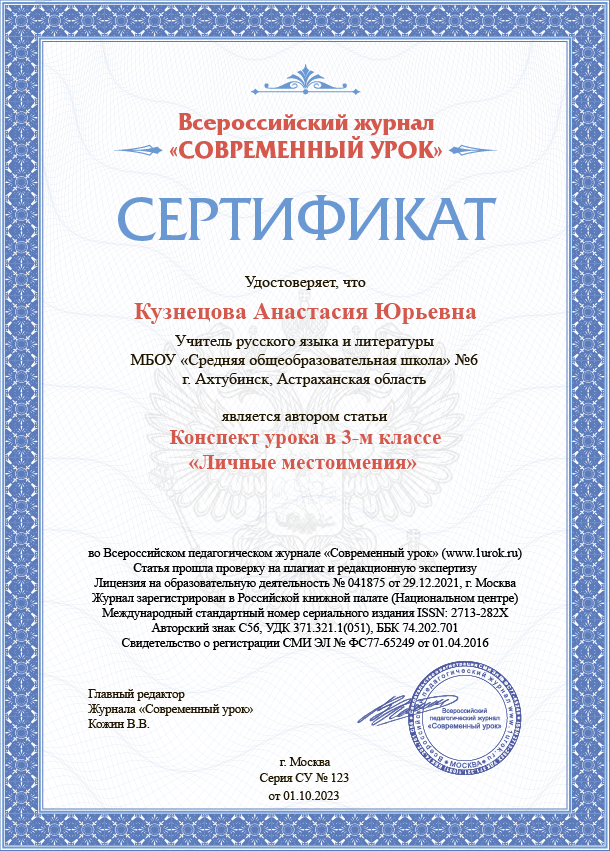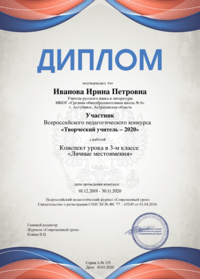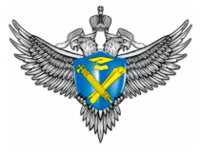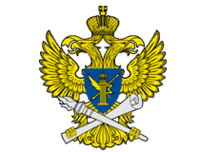Внеклассное мероприятие по английскому языку для учащихся 5 классов «MERRY CHRISTMAS»
Автор: Воликова Ольга Анатольевна
Организация: МБОУ СОШ №5
Населенный пункт: Краснодарский край, с. Белая Глина
Ключевые понятия: Рождество, рождественская ёлка, рождественская открытка, пудинг, рождественский чулок, подарки, Санта Клаус.
Категория «основное общее образование».
Номинация «Разработки внеклассных мероприятий».
Цель занятия:
Развитие коммуникативной, социокультурной компетенций.
Задачи занятия:
- Воспитательный аспект: Расширение кругозора учащихся по страноведческому материалу. Знакомство с традициями празднования Рождества в Великобритании.
- Воспитательный аспект: Воспитание уважительного отношения к культуре, традициям и обычаям страны изучаемого языка.
- Учебный аспект: Совершенствование навыков говорения, аудирования, чтения. Развитие творческих способностей учащихся.
- Развивающий аспект: Развитие и поддержание интереса к изучению иностранного языка. Формирование положительной мотивации учения. Развитие внимания, воображения, догадки.
- Планируемые результаты:
Личностные: саморазвитие учащихся, мотивация к обучению и познавательной деятельности, межличностные отношения, способность ставить цели и добиваться их достижения;
Метапредметные: освоение учащимися межпредметных понятий и универсальных учебных действий, осуществление учебной деятельности, организация учебного сотрудничества с педагогом и сверстниками;
Предметные: получения знания в рамках внеурочного занятия, его преобразованию и применению в учебных, учебно – проектных и социально – проектных ситуациях.
- Формируемые УУД:
личностные: формирование внутренней позиции и нравственно – этической оценки, самостоятельность в действии;
регулятивные: освоение способов принятия и сохранения учебной задачи, адекватно самостоятельно оценивать правильность выполнения действий;
коммуникативные: умение работать в группе, паре, способствовать продуктивной кооперации, строить логическое рассуждение, адекватно использовать речь и речевые средства для решения коммуникативных задач, слушать и слышать чужую точку зрения, отстаивать свою;
познавательные: умение осуществлять логические операции, строить логические высказывания в устной и письменной форме, самостоятельно выделять и формулировать познавательные цели, искать и выделять необходимую информацию, умение структурировать знания.
- Способы мотивации учащихся: фонетическая зарядка, организация здоровьесберегающего образовательного пространства урока, песня, использование дидактических материалов, использование игровых форм обучения, диалогическая речь, использование ИКТ, проектная методика.
Оборудование: презентация по теме «Рождество», тексты для чтения, видео файлы, рисунки, открытки, письма учащихся Санта Клаусу.
Ход занятия.
- Приветствие и организационный момент. Мотивация учебной деятельности учащихся. Слайд 1.
T: Good morning, boys and girls! I’m glad to see you. Our contest is devoted to the most interesting, the most important, the most beautiful, and of course the most favorite holiday among the people all over the world – Christmas!
- История Рождества. Актуализация знаний. Слайд 2.
T: Does everybody know the history of the Christmas? Our angels will help us to know about this holiday.
ANGEl1. Christmas! A moment of magic in all our lives. It is a special time when we wish you and your families love, health, happiness. And lasting peace throughout the world.
ANGEL2. British people celebrate Christmas on the 25th of December. As you know, Christmas is a religious holiday. Families come together to share their happiness, attend church, exchange presents.
ANGEL3. The Christmas story comes from the Bible. It tells us an interesting story of shepherds who were watching their sheep when an angel appeared to them. He told them that a Saviour was born in Bethlehem.
ANGEL4. The shepherds went there to see Jesus. The baby Jesus was born in a stable. His mother was the Virgin Mary and his father was Joseph.
ANGEL5. The Bible tells us how the Wise Men followed a star until it led them to Jesus. The Wise Men gave Jesus many gifts. Because of the birth of the Jesus Christ, the Christians celebrate Christmas.
ANGEL6. Christmas tree is becoming popular in England. The British people decorate it with ornaments and lights.
ANGEL7. It is wonderful, isn’t it? You can see a lot of toys on it. The lights are red, green and gold. Red symbolizes the blood of Jesus, which was shed in his crucifixion, green symbolizes eternal life, and gold is the first color associated with Christmas, as one of the three gifts of the Magi, symbolizing royalty.
- Развитие фонетических навыков. Чтение стихотворения. Слайд 3.
T: Let’s read the poem, please
CHRISTMAS TREE
O Christmas tree, o Christmas tree,
Your branches green delight us.
O Christmas tree, o Christmas tree,
Your branches green delight us.
They’re green when summer days are bright.
They’re green when winter snow is white.
O Christmas tree, o Christmas tree,
Your branches green delight us.
(Все учащиеся исполняют песню «We wish you a merry Christmas»). Слайд 4.
- Работа с лексикой. Учащиеся соединяют половинки слов, затем произносят их. Слайд 6.
T: Do you know Christmas words? Match the parts of the words, and then pronounce them, please.
- Deco sents
- Stoc cker
- Tin ration
- Christ place
- Pre sel
- Fire king
- Cra mas
- Santa ding
- Pud Claus
- Чтение стихотворения « Christmas morning». Слайд 6.
T: Read the poem, please.
I wake on Christmas Morning,
My stocking on my bed;
Christmas Eve has come and gone
And Santa Claus has fled
My parents all around me:
A bike! A ball to throw!
A look through the window pane
- footsteps in the snow. (Peter Thabit Jones.)
- Говорение (построение речевого высказывания).
T: And now let’s meet our guests: Snow White and seven dwarfs. What does Christmas mean for you? Слайд 7.
Dwarf 1: Christmas is a fir – tree. People in England used to grow many kinds of trees in ports for indoor decoration at Christmas. Слайд 8.
Dwarf 2: Christmas is a Santa Claus, the main person of Christmas. He lives in the North Pole. On the 25th of December he hitches his reindeer to a sleigh and brings the presents for children in the Christmas Stockings. Слайд 9.
Dwarf 3: Christmas is a fire – place with stockings. December 24 – is Christmas Eve. This evening the kids go to bed in anticipation, because it is the night Santa Claus will bring them presents. Слайд 10.
Dwarf 4: Christmas is a pudding. Traditionally a coin is put into the putting. It brings luck to a person who finds it. (Учащиеся исполняют песню “Christmas is coming”). Слайд 11.
Dwarf 5: Christmas is a candle. Слайд 12.
Dwarf 6: Christmas is boxes with presents. Слайд 13.
Dwarf 7: Christmas is cards and crackers for me. But I am impressed by the letter I have read. Слайд 14.
- Работа над чтением письма.
T: There are many Christmas traditions, let’s read about them in Emma’s letter.
31 Edward Road
Hastings
England
1December
Dear Ann,
Thanks a lot for your letter. It was lovely to hear from you. I’m glad you’re OK. You asked me to tell you about Christmas traditions.
Christmas is my favourite festival. There are lots of reasons why I like it: a Christmas tree shining with lights and tinsel, colorful stockings hanging near the fireplace and presents. I love getting presents. Do you? My younger sister believes Father Christmas comes down the chimney and puts his presents in our stockings. But I know our parents do it.
Last Christmas I was at my aunt’s in London. My cousin Susan and I went to Hyde Park to watch people swimming in the Serpentine.
My uncle swam too. He likes swimming and he always swims on Christmas Day. Do you swim in the winter?
What are your Christmas traditions?
Please write to me soon.
Love,
Emma
- Проверка понимания прочитанного.
T: Read the sentences and say: are they true or false?
- Emma likes Christmas.
- She doesn’t believe Father Christmas puts presents in the stockings.
- Emma celebrated last Christmas with her aunt’s family in Oxford.
- Susan is Emma’s friend.
- Susan swam in the Serpentine.
- The girls watched the swimmers in Hyde Park.
- Беседа по теме.
T: Answer the questions:
- Do you like Christmas and New Year? Why?
- Do you celebrate Christmas and New Year at home or with your friends?
- Where did you go last time?
- Do people swim in winter in your home town?
- Would you like to swim at Christmas time?
- Развитие навыков аудирования и письма. Учащиеся слушают рождественские обещания английских детей и затем пишут свои.
T: Read the Christmas resolutions and then write your own.
My Resolutions.
I will be good next year.
I will do all my homework.
I won’t be able for my lessons.
I will also some sport every day.
Dan
My Christmas Resolutions.
I won’t eat lots of chocolate and sweets.
I will eat more fruit and vegetables.
I won’t spend a long time on the phone and I will practice the piano every day.
Jenny
My Resolutions.
I will make my bed.
I will do the washing up after dinner.
I will feed my dog and walk in the park.
I won’t watch TV all day long.
Mike
- Оформление рождественских открыток и чтение писем Санта Клаусу. (Шаблоны заготовлены учащимися дома.)
T: On Christmas all people receive and send Christmas cards. Design your own Christmas cards for your teacher and your friends.
Christmas Greetings.
With best wishes for Christmas and the New Year.
Wishing you every success for the New Year.
Wishing you a Christmas filled with love and friendship.
May your Christmas be filled with happy surprises.
Wishing you a Merry Christmas and a Happy New Year.
With warm and friendly wishes for a Merry Christmas and a Happy New Year.
Season’s greetings.
Т: And now let’s see Christmas ABC. Слайд 15.
M for the Music, merry and clear;
E for the Eve, the crown of the year;
R for the Romping of bright girls and boys;
R for the Reindeer that bring them the toys;
Y for the Yule log softly aglow.
C for the Cold of the sky and the snow;
H for the Hearth where they hang up the hose;
R for the Reel which the old folks propose;
I for the Icicles seen through the pane;
S for the Sleigh bells, with tinkling refrain;
T for the Tree with gifts all abloom;
M for the Mistletoe hung in the room;
A for the Anthems we all love to hear;
S for St. Nicholas – joy of the year!
- Работа над песней «Jingle Bells».Учащиеся поют песню.
T: Let’s sing a very popular sing «Jingle Bells». Слайд 16.
Dashing through the snow, in a one-horse open sleigh
Over the fields we go, laughing all the way;
Bells on bob-tail ring, making spirits bright
What fun it is to ride and sing a sleighing song tonight
(Chorus)
Jingle bells, jingle bells, jingle all the way!
O what fun it is to ride in a one-horse open sleigh
Jingle bells, jingle bells, jingle all the way!
O what fun it is to ride in a one-horse open sleigh
A day or two ago, I thought I'd take a ride
And soon Miss Fanny Bright, was seated by my side;
The horse was lean and lank, misfortune seemed his lot;
He got into a drifted bank and there we got upset
- Выполнение квиза.
T: Read and do the quiz.
Christmas Quiz.
- The 25th of December is (Christmas Day, Boxing Day, New Year’s Day).
- The Day after Christmas is … (Mother’s Day, Boxing Day, New Year’s Day).
- On Christmas Eve people put their presents under the … (tree, bed, fireplace).
- Santa Claus puts the small presents … (in the fireplace, on the table, in children’s stockings).
- Every year there is a big New Year’s tree in …square in Britain (Red, Times, Trafalgar).
- This New Year’s tree is a present from people of … to the people of Great Britain (the USA, Norway, Russia).
- Where do Christmas trees come from originally (the USA, Germany, Ireland).
- What meal do housewives cook at Christmas (pudding, pumpkin, oranges)?
- Разгадывание кроссворда.
T: Let’s guess the crossword.
- Подведение итогов урока. Рефлексия «Укрась елку». Учащимся раздаются бумажные шары: красные, зелёные, жёлтые и синие. На доске изображена ёлка, на которую прикрепляются шары.
- Now tell me, please. Did you like our lesson? Our lesson is over. Thank you for your work. I wish you a Merry Christmas and a Happy New Year! Good buy.
Список литературы:
- Соловова Е.Н. Методика обучения иностранным языкам. – М.: Просвещение, 2002.
- Вербицкая М.В. Методические рекомендации по некоторым аспектам совершенствования преподавания английского языка /М.В.Вербицкая, К.С.Махмурян, В.Н.Симкин. – М.: ФИПИ, 2014.
- Всероссийский научно – методический журнал «Английский язык. Всё для учителя» № 11 -12 (59 – 60), 2016 г.
- Всероссийский научно – методический журнал «Английский язык. Всё для учителя» № 11, (71), 2017 г.
- Всероссийский научно – методический журнал «Английский язык. Всё для учителя» № 11, (83), 2018 г.
- Сафонова Е.П. Современный урок иностранного языка/ Е.П.Сафонова. – М., 2011.
- Федеральный государственный образовательный стандарт начального общего образования. – М.: Провещение.
- Национальная образовательная инициатива «Наша новая школа» // Вестник образования. – 2010. - № 4.
- Учебник: Деревянко Н.Н. и др. Английский язык нового тысячелетия для 6 класса общеобразовательных учреждений, Титул, 2004 г.
- Рабочая тетрадь к учебнику: Деревянко Н.Н. и др. Английский язык нового тысячелетия для 6 класса общеобразовательных учреждений, Титул, 2004 г.


